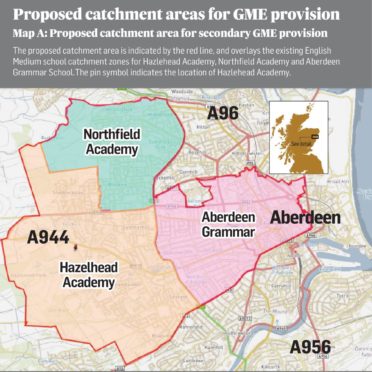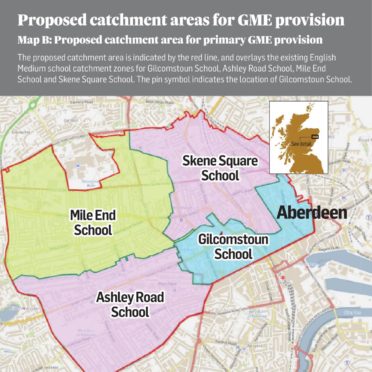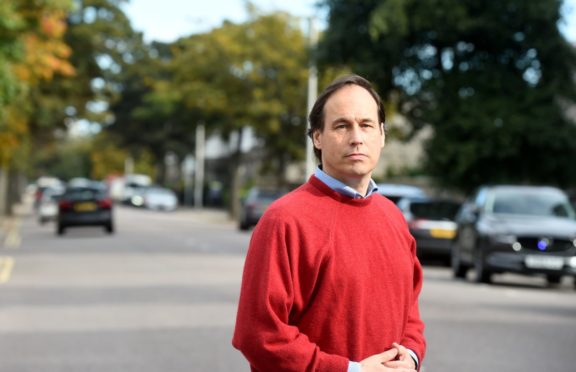A row has erupted over proposed catchment areas for Gaelic education in Aberdeen.
The city offers Gaelic Medium Education (GME) in two schools, and officials have drawn up catchment areas for them for the first time.
But there are fears that restricting the map gives the impression that children from outwith the two areas are not eligible for GME – and might put parents off enrolling.
During Thursday’s education operational delivery committee meeting, members agreed to put it to the public before creating new catchment areas for the GME provisions at Hazlehead Academy and Gilcomstoun School.
The council proposed zones that align with the existing catchments areas for the English Medium schools. They passed the motion to present this plan to the public by a split vote that was carried by the convener.
There are currently no catchment areas for the Gaelic schools in Aberdeen.
According to council papers, creating catchment areas will help with budgeting for student transport to and from school and should not have any effect on who can attend.
But members of the committee and other councillors expressed concerns that the proposed area is too restrictive and should instead cover the entire city.
Will imposing limited catchment areas leave some families out?
At the secondary level, the proposed zone for Hazlehead will overlay the existing English Medium zones for Hazlehead, Northfield Academy and Aberdeen Grammar School.

The proposed catchment area for the GME primary school at Gilcomstoun will align with the existing English Medium school zones for Gilcomstoun, Ashley Road, Mile End and Skene Square schools.

Councillor Martin Greig was concerned that excluding parts of the city from the catchment areas might make GME seem inaccessible to some families.
He proposed that the forthcoming public consultation should be based on a citywide catchment area.
He said: “The real risk of creating this catchment area is that it will suppress interest and demand for Gaelic Medium Education.
“There will be families and pupils thinking that they don’t live in the zone, therefore they don’t have a right to GME.
“That principle – that you have to live in the right area to get access to any specialised or any particular form of education – is not welcome.”
The public has the final say
Any permanent changes to school zones must first be discussed and approved through public consultation.
During the discussion, chief education officer Eleanor Sheppard said that GME enrolment is well below capacity at the schools. It is unlikely that applicants who are technically outwith any new zone would be denied entry.
She also said that casting too wide a net with the catchment area could tie the council up in obligations that it might struggle to fulfil.
“The approach in Gilcomstoun is one of total immersion, so the reliance is on Gaelic speaking teachers and support staff in terms of supporting that provision.
“We have actually had significant challenges in terms of recruiting Gaelic speakers into those posts, so I think it would be very high risk to look to try and expand that further into different locations.”
She added that education officials are looking into adding to the provision further by tapping into digital learning resources and teachers available nationwide through e-Sgoil.
Other members worried that discussing the issue at this point would only serve to pre-empt the public consultation and pushed for the agenda to move forward.
Regardless, it will be up to the public to decide whether to implement the proposes catchment areas, modify them or scrap the idea completely.
The council’s vote paved the way for a consultation period to begin at the end of the summer. There will be a public meeting in September.

